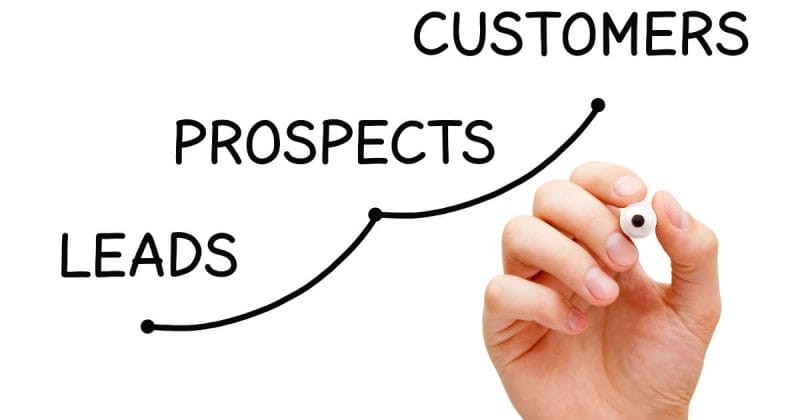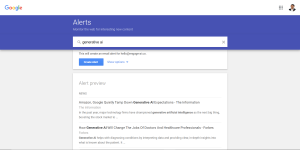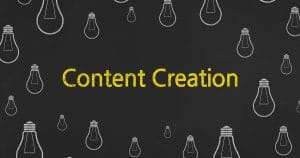We all understand how it feels when a sale closes. The moment a sale closes is a thrilling blend of accomplishment and satisfaction for a business. It not only creates financial gains but also instills a sense of confidence and motivation within the team.
Having the right system that guides team members to close sales more effectively can benefit businesses. This is where the sales pipeline can be effective.
What Is the Sales Pipeline?
A sales pipeline is a systematic and visual representation of the stages a potential customer goes through before making a purchase.
It outlines the entire sales process, from the initial contact with a prospect to closing the deal. Typically, it consists of distinct stages such as prospecting, lead qualification, needs analysis, presentation, handling objections, closing, and post-sale follow-up.
This structured framework allows businesses to track and manage leads efficiently, providing insights into the health of sales activities. A well-managed sales pipeline facilitates better forecasting, resource allocation, and strategic decision-making.
According to a survey conducted by Harvard Business Review, companies with inefficient pipeline management experienced a 4.6% average growth, while those with effective sales pipeline management achieved a 15% boost, attaining a 5.3% average growth rate.
Steps for Building a Sales Pipeline

Your Ideal Customer Profile and Buyer Persona
The first crucial step in building a successful sales pipeline is defining your ideal customer profile and creating detailed buyer personas. Understand the characteristics, needs, and pain points of your target audience.
Develop a clear picture of your ideal customer to tailor your sales approach effectively.
This foundational step ensures that your sales efforts are directed toward the right audience, increasing the chances of engagement and conversion.
By aligning your strategies with the preferences of your potential customers, you set the stage for a more efficient and fruitful sales pipeline.
Establish Lead Generation Strategies
Once you’ve defined your ideal customer profile, establishing effective lead generation strategies is the next important step in building a sales pipeline. Diversify your approach by incorporating both inbound and outbound methods.
Leverage content marketing to provide value and attract potential customers organically. Utilize social media platforms to engage with your audience and build a community around your brand.
Networking and referrals can tap into existing relationships, increasing trust. Implement targeted advertising campaigns to reach a broader audience. By combining these strategies, you create a consistent flow of quality leads into your pipeline, ensuring a steady stream of potential customers to move through the sales process.
This proactive approach not only widens your reach but also increases the likelihood of successful conversions, laying the foundation for a thriving sales pipeline.
Build and Nurture Relationships with CRM
Personalization and genuine communication play key roles in creating trust and loyalty. Emphasize a customer-centric approach by understanding individual needs and preferences.
Simultaneously, implementing a Customer Relationship Management (CRM) system is essential for systematic relationship management. If your in-house team is not an expert in implementing CRM with your custom software, outsourcing staffing can be a helpful and economical option.
A CRM tool centralizes customer data, streamlining interactions and ensuring no details slip by an employee. It facilitates personalized communication, timely follow-ups, and a comprehensive customer journey overview.
You can look for a CRM platform that uses Generative AI to write email campaigns, does Predictive analytics about the campaign, and has other features for effective customer engagement.
Combining relationship-building strategies with a CRM system establishes a solid foundation for lasting connections, enhancing customer experiences, and ultimately contributing to the overall success of a well-functioning sales pipeline.
Develop a Clear Sales Process and Goals
Define your targets for sales and how many leads you would need to reach your targets. In this process, you’ll do all the calculations to understand what to do.
Set realistic targets for lead conversion, revenue generation, and customer retention. By establishing a well-structured process with clear objectives, you empower your team to work cohesively towards common goals.
Regularly assess and refine your process based on performance data and market dynamics, ensuring adaptability to changing circumstances. A clearly defined sales process, coupled with tangible goals, sets the foundation for a streamlined and successful sales pipeline, driving business growth.
Customize Sales Stages for Your Business
While common stages like prospecting, qualification, and closing are fundamental, adapting them to align with your industry, product offerings, and customer journey is key.
Customizing stages allows for a more accurate representation of your sales process, ensuring that each step reflects the specific challenges and opportunities relevant to your business.
This customization enhances the efficiency of your sales team by providing a roadmap that resonates with your unique value proposition and customer base.
Ultimately, a personalized sales pipeline promotes a more targeted and effective approach, increasing the likelihood of successful conversions and fostering long-term customer relationships.
Evaluate Performance
Regularly monitor key performance indicators (KPIs) to gain insights into the effectiveness of your strategies. Assess the conversion rates at each stage, analyze lead response times, and evaluate the overall efficiency of your pipeline.
Utilize customer feedback to identify areas for improvement and address potential bottlenecks. Data-driven decision-making enables you to adapt your approach, refine your sales process, and optimize resource allocation.
By consistently evaluating performance, you create a dynamic and responsive sales pipeline that evolves with market trends, customer behaviors, and internal dynamics, ensuring sustained success and continuous improvement for your sales efforts.
Handle Objections and Feedback
Effectively handling objections and feedback is a pivotal aspect of building a resilient sales pipeline. Acknowledge objections as opportunities to address concerns and refine your pitch.
Equip your sales team with well-crafted responses and objection-handling techniques to instill confidence in potential customers. Additionally, actively seek and welcome feedback from prospects and customers alike.
Constructive feedback provides invaluable insights into customer expectations and areas for improvement. By addressing objections thoughtfully and leveraging feedback for continuous refinement, you not only navigate challenges but also strengthen customer relationships. This proactive approach ensures a smoother progression through the sales pipeline, fostering trust and increasing the likelihood of successful closures.
Stages of a Sales Pipeline
Prospecting
At the initial stage of a sales pipeline, prospecting involves identifying potential customers and initiating contact. This crucial phase relies on strategic outreach through channels such as networking, referrals, and targeted marketing efforts.
The goal is to cast a wide net and identify leads that align with the business’s ideal customer profile. During prospecting, sales teams gather valuable information about potential clients, laying the foundation for subsequent stages.
This includes understanding the prospect’s needs and challenges and evaluating their fit for the product or service. Successful prospecting increases the number of leads and ensures that the sales pipeline begins with prospects with genuine potential, setting the stage for effective qualification and progression through the remaining stages of the sales process.
Qualification - Utilizing BANT Criteria (Budget, Authority, Need, Timeline)
The qualification stage in a sales pipeline is an important checkpoint where leads are rigorously evaluated using the BANT criteria: Budget, Authority, Need, and Timeline.
This systematic approach ensures that the sales team focuses on leads with a higher likelihood of conversion.
By assessing the prospect’s budget constraints, determining decision-making authority, understanding specific needs, and establishing a timeline for purchase, businesses can pinpoint qualified opportunities.
Qualification using BANT criteria streamlines the sales process, allowing teams to allocate resources effectively and prioritize leads that align with the company’s objectives. This stage sets the foundation for personalized engagement, tailoring solutions to address the prospect’s unique requirements and advancing them to subsequent stages of the sales pipeline.
Meeting & Requirement Analysis
Here, the sales team meticulously examines the prospect’s needs, tailoring the approach to align seamlessly with their specific requirements. Through comprehensive questioning and active listening, the team gains profound insights into the challenges and aspirations of the potential customer.
This deep understanding lays the groundwork for crafting a solution that not only addresses current pain points but also anticipates future needs.
The requirement analysis phase is important in establishing a personalized and value-driven interaction, propelling the prospect further along the pipeline. As businesses navigate this stage adeptly, they forge a path toward presentations and proposals that resonate profoundly with each customer’s unique demands.
Presentation
After understanding the client’s requirements, the sales team delivers a customized and compelling presentation.
This phase is all about showcasing the product or service’s benefits, addressing specific pain points, and demonstrating how the offering uniquely meets the customer’s requirements.
A successful presentation not only captures attention but also solidifies the prospect’s interest and trust. It marks a critical transition in the sales journey, laying the groundwork for overcoming objections and steering the prospect toward a positive decision.
Negotiation
In the sales pipeline, negotiation is the art of finding mutually beneficial agreements that bring both parties closer to a deal. This stage involves skillful communication, addressing any remaining concerns, and fine-tuning terms to meet the prospect’s needs.
Negotiation aims to bridge gaps, whether they are related to pricing, terms, or specific features. Successful negotiation builds rapport and trust while ensuring that the final agreement satisfies both the seller and the prospect.
This crucial step in the sales process propels the deal towards closure, emphasizing flexibility and a collaborative approach to reach a consensus that aligns with the prospect’s expectations.
Closing
The art of persuasion and relationship-building reaches its pinnacle in the closing stage. Here, the sales team seeks a commitment from the prospect, bringing the deal to fruition.
It involves recognizing buying signals, addressing any lingering objections, and instilling a sense of urgency. The closing phase requires finesse and confidence as the salesperson guides the prospect toward a decisive and positive decision.
Whether it’s through trial closes, assumptive closes, or other proven techniques, the goal is to solidify the prospect’s intent and finalize the agreement. Successful closures signify not just a transaction but the culmination of a well-nurtured relationship, marking the achievement of the sales team’s efforts.
Follow Up
Post-closure, consistent, and strategic follow-ups are paramount in fortifying customer relationships. This phase transcends the transaction, focusing on customer satisfaction, addressing queries, and ensuring a seamless post-purchase experience.
Timely follow-ups not only showcase a commitment to customer welfare but also create opportunities for upselling, cross-selling, and garnering valuable testimonials. Moreover, feedback gathered during follow-up catalyzes refining products or services.
By prioritizing post-sale engagement, businesses not only foster loyalty but also lay the groundwork for enduring customer partnerships, fostering a continuous cycle of success within the sales pipeline.
Benefits of a Strong Sales Pipeline

Improved Forecasting
A well-organized sales pipeline enhances forecasting accuracy, offering businesses a clear and structured view of potential deals at various stages. By systematically tracking prospects as they move through the pipeline, businesses gain valuable insights into conversion rates and sales trends.
This foresight enables more precise sales forecasting, empowering companies to make informed decisions regarding resource allocation, goal-setting, and overall strategic planning. Improved forecasting is a key advantage, ensuring businesses can navigate market dynamics with agility and maximize their potential for successful deals and revenue generation.
Enhanced Sales Planning
An efficient sales pipeline facilitates enhanced sales planning by breaking down the entire process into well-defined stages. This structured framework allows businesses to strategically plan their approach at each step, ensuring that resources, efforts, and time are allocated judiciously.
With a clear understanding of where prospects stand in the pipeline, sales teams can optimize their strategies, focus on high-priority leads, and customize their interactions to meet specific customer needs.
Enhanced sales planning not only streamlines the overall process but also empowers businesses to set realistic goals, adapt to market changes, and maximize their sales potential with a well-thought-out and dynamic approach.
Optimized Resource Allocation
By delineating each stage of the sales process, teams can allocate personnel, time, and budget more efficiently.
The pipeline acts as a roadmap, guiding resource distribution towards high-potential leads and critical stages in the sales journey.
This strategic allocation ensures that teams prioritize activities with the greatest impact on conversions, preventing unnecessary expenditure of resources on less promising leads. The result is a streamlined and cost-effective sales approach, enhancing overall productivity and increasing the likelihood of closing deals.
Optimized resource allocation, guided by the insights from a structured pipeline, is fundamental to achieving sustainable growth and maximizing return on investment in the competitive sales landscape.
Increased Sales Team Efficiency
By providing a clear visual representation of the sales process, teams can focus their efforts on high-priority leads and strategically navigate each stage.
This organized approach reduces ambiguity, minimizes time wasted on unqualified prospects, and enhances overall productivity. Sales professionals can leverage the insights gained from the pipeline to tailor their strategies, address specific customer needs, and streamline their workflow.
The result is a more efficient sales team that operates with purpose, leveraging data-driven decision-making to achieve higher conversion rates and meet revenue targets. In essence, an optimized sales pipeline empowers teams to work smarter, not just harder, to pursue successful deals.
Clearer Sales Process Visibility
With the help of a clearer process, Managers gain real-time insights into team performance, enabling timely interventions and resource adjustments.
The transparent pipeline becomes a tool for informed decision-making, facilitating strategic adaptations to optimize sales strategies.
This enhanced visibility not only mitigates potential bottlenecks but also cultivates a proactive sales environment, fostering adaptability, and accountability, and ultimately, driving more successful and streamlined sales processes.
Enhanced Communication and Collaboration
Sales pipelines enhance communication and collaboration by providing a shared visual roadmap of the sales process. Teams can seamlessly communicate about prospects’ progress, share insights, and collectively strategize for success.
The transparency ensures everyone is on the same page, reducing miscommunication and fostering a collaborative environment. By centralizing information within the pipeline, teams can proactively address challenges, celebrate achievements, and adapt strategies together, creating a cohesive and communicative atmosphere that contributes to overall sales effectiveness.
Consistent Sales Process
A key benefit of a sales pipeline is the establishment of a consistent sales process. Defining uniform stages and procedures minimizes confusion and presents a professional image.
This consistency not only streamlines team efforts but also enhances customer experience, instilling confidence and trust. A standardized approach ensures that each prospect receives a cohesive and well-orchestrated interaction, contributing significantly to the overall success of the sales pipeline.
Quick Identification of Issues
A significant benefit of a sales pipeline is the quick identification of issues. Through systematic tracking, teams can promptly recognize challenges or bottlenecks in the sales process.
This early detection allows for immediate resolution, preventing potential setbacks. The agile response to issues ensures a smooth progression through the pipeline, maintaining efficiency and increasing the overall effectiveness of the sales strategy.
Continuous Improvement
By providing insights into performance metrics and customer interactions, businesses can iteratively refine their strategies. Regular evaluations allow for adaptive adjustments, ensuring the sales process remains dynamic and aligned with evolving market dynamics.
This commitment to continuous improvement fosters a culture of learning within the sales team, promoting agility and resilience in the face of changing circumstances, ultimately contributing to sustained success and growth.
Sales Pipeline Vs. Sales Funnel
The sales pipeline primarily reflects a sales team’s actions in the sales process, focusing on efforts to generate leads and convert them into customers. It tracks key metrics such as deal quantity, total value, and stage progression.
In contrast, a sales funnel measures conversion rates and illustrates the prospect’s journey, emphasizing how they discover a business and move towards making a purchase.
The sales pipeline is centered on the seller’s perspective, assessing the effectiveness of the sales team by monitoring interactions, meetings, proposals, and deal closures.
On the other hand, the sales funnel provides insights into the stage of lead, such as Awareness, Interest, Desire, or Action, helping marketing teams track channels, budget efficiency, and the success of marketing efforts.
Conclusion
In conclusion, the importance of building a robust sales pipeline is undeniable in the dynamic business landscape. A well-structured pipeline not only provides clarity and organization but serves as a strategic tool, guiding businesses through the intricacies of the sales process.
From prospecting to closure and beyond, it facilitates efficient resource allocation, improved forecasting, and a customer-centric approach. The benefits, ranging from increased efficiency to continuous improvement, underscore the significance of this systematic approach.
A sales pipeline not only streamlines operations but also fosters adaptability, enabling businesses to navigate challenges and capitalize on opportunities. In essence, it’s the foundation for sustainable growth, enhancing communication, collaboration, and overall success in the competitive realm of sales.








